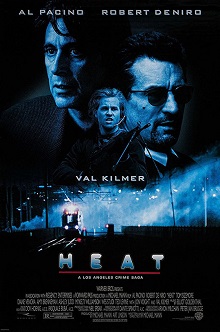Ari Aster, 2018, USA
Of course, the blurb that’s it’s a modern ‘The Shining’, or ‘The Exorcist’ or whatever isn’t helpful at all and rather silly. How can a piece survive on its own with that kind of baggage? But it’s an exemplary entry in the Horror trend towards the slow burn, the more abstract; the kind offered by contemporary favourites like, yes, ‘The Babadook’, ‘It Follows’, ‘The Witch’, ‘A Girl Walks Home at Night Alone’, etc. The kind that Brett Easton Ellis doesn’t really like – despite himself being responsible for a fine example of art horror – and the kind that is likely to provoke those that like their genre less obviously existential and more schlocky and jumpy into boredom. But it does have jumps – well, it made the women along the aisle from me jump out of their noisy popcorn; and from reading and hearing comments from others it does seem to offer enough for the crowd for whom ‘The Conjuring’ represents horror.
A family mired by grief over their unknowable Grandmother’s death starts experiencing an uneasiness that is more down to unspoken and unexpressed feelings than anything supernatural. This is where it is evident that this particular strain of horror benefits from demands for superior acting and ‘Hereditary’ certainly offers that. Toni Collette as the troubled and turbulent mother Annie, Alex Wolff as her suppressed and traumatised son (and Wolff can hold a lingering close-up) and Gabriel Byrne as the somewhat bemused and mild voice of normality are all exceptional. The dioramas Annie makes offer a lot of opportunities for surrealism that the film doesn’t dwell upon or much utilises for hints, scares or expression. Rather, these dioramas can be seen as part of her attempt to control as well as replicate her environment, but this too is vulnerable as hinted at by the opening unseen and omnipotent force gliding into the diorama of their domestic life via the camera (the artform of dioramas is infiltrated by the artform of horror).
And then there is the car accident. The build-up, execution and aftermath are so exceptionally well done that, for a moment, the film is pushed into something special (and it’s certainly one of my scenes of the year). The fact the film lingers on the shock until it blossoms into full grief stricken horror is masterful. So it is true that, afterwards, the steering into the kind of comfortable tropes that the first half has hinted at but avoided is where much of the disappointment from audiences surely stems. Here’s a mat as a clue; here’s a book of photographs to explain it all; here’s a voiceover, etc. Films such as ‘It Comes at Night’ and ‘The Witch’ – hell, even ‘The Shining’ – have surely proven that explanation isn’t really needed when so much else is working and – just like the Infomercial of Exposition in ‘Get Out’ – ‘Hereditary’s obviousness in the latter stages can only cause weakness and dissatisfaction, even if it does reach for satire and conspiracy theories. But it does succeed as a tale of a family crumbling into more and more horror, where the very opening glide into a diorama points both to the artifice of storytelling and an omnipotent external force diving in to tear them apart. But right to the end, there’s enough twists, slight-of-hand and outstanding detail (such as the truly haunting and horrible disembodied head; or the fact that it’s not THAT on the ceiling you need to worry about but – as the camera pans – it’s something over THERE) to make this a little special; hence the hyperbole. The execution outweighs its weaknesses.
Its kindred spirits are ‘Rosemary’s Baby’ but also ‘Kill List’ where it becomes “actually you're watching THIS film”. But the film doesn’t have the conviction to follow through with the abstractions and ambiguities like ‘The Witch’ and ‘It Comes at Night’ and is ultimately happy to be something far more recognisable and more conventional. I certainly didn’t feel the same depth of disappointment that some have felt – because perhaps tropes don’t trouble me as much – but by the end neither did I feel it was ultimately quite as outstanding as it might have been, despite its frequent moments of brilliance.









